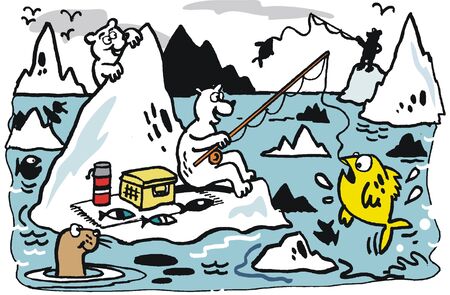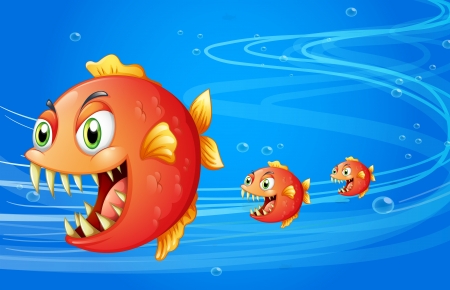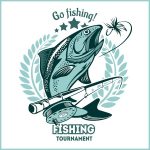Introduction to Illegal Fishing in the U.S.
Illegal fishing practices in the United States have become a significant concern for both environmentalists and everyday anglers. In American waters, illegal fishing refers to any activity that violates state or federal fishing regulations—such as fishing without a license, exceeding catch limits, using banned gear, or harvesting protected species. These actions threaten not only the health of fish populations but also the delicate balance of aquatic ecosystems and local economies dependent on sustainable fishing. As more people head out to enjoy America’s lakes, rivers, and coastal waters, understanding what constitutes illegal fishing and why it matters is crucial. Whether you’re a weekend hobbyist or a seasoned pro, recognizing these practices helps ensure that our nation’s fisheries remain healthy and abundant for generations to come.
Common Illegal Fishing Practices
Illegal fishing in the U.S. covers a range of activities that threaten both local ecosystems and the livelihoods of responsible anglers. Understanding these practices is crucial for anyone passionate about maintaining healthy waterways and fish populations. Below, we break down the most common unlawful activities encountered across American lakes, rivers, and coastal waters.
Typical Unlawful Activities
| Activity | Description |
|---|---|
| Overfishing | Catching more fish than state or federal regulations allow, often leading to the depletion of certain species and upsetting natural balance. |
| Using Banned Equipment | Employing gear such as gillnets, explosives, or electric shock devices that are prohibited due to their destructive impact on fish habitats and non-target species. |
| Poaching Protected Species | Targeting or keeping fish that are listed as threatened or endangered, regardless of season or size restrictions. |
| Fishing Without a License | Failing to obtain the required state or federal fishing license before casting a line, a rule designed to fund conservation efforts and regulate fish populations. |
Why These Practices Matter
The consequences of illegal fishing practices ripple far beyond a single catch. Overfishing can collapse entire fisheries, while banned equipment often results in bycatch—unintended capture of other wildlife like turtles or birds. Poaching protected species undermines years of conservation work. And skipping out on licensing means less funding for habitat restoration and community education programs. By staying informed about these illegal activities, every angler plays a part in preserving America’s natural aquatic heritage.

3. Fines and Legal Consequences
Breaking fishing laws in the U.S. isn’t just a slap on the wrist—it can cost you big time, both financially and legally. Each state sets its own rules and penalties, but federal laws also apply, especially when it comes to endangered species or fishing across state lines. Most first-time offenders might face fines ranging from $100 to several thousand dollars, depending on the severity of the violation. For instance, in Florida, illegally harvesting undersized snook can land you a fine up to $500 and a potential 60 days in jail. In California, poaching abalone could cost you as much as $40,000 for repeat offenses.
It doesn’t stop at fines. Serious violations—like using banned gear, exceeding catch limits, or trafficking protected species—can lead to felony charges, hefty restitution payments, loss of fishing licenses, and even jail time. A notable case out of Alaska saw commercial fishermen fined over $1 million and sentenced to prison for repeatedly violating quotas and falsifying catch records.
The federal Lacey Act is another heavy hitter: it makes it a crime to transport illegally caught fish across state lines, with penalties that can include massive fines and up to five years in federal prison. The message is clear—whether you’re casting a line for fun or fishing commercially, breaking the rules isn’t worth the risk.
4. Impacts on Ecosystems and Local Communities
Illegal fishing isn’t just a matter of breaking the rules—it has real consequences for both the environment and the people who depend on healthy fisheries. When folks ignore regulations, it can throw entire aquatic ecosystems out of balance and put pressure on already vulnerable fish species. Let’s take a closer look at how illegal practices ripple out through native fish populations, habitats, and the lives of those in America’s recreational and commercial fishing communities.
Effects on Native Fish Populations
Native fish species are especially at risk when people use illegal gear or exceed catch limits. Overharvesting can lead to population declines, making it tough for certain species to recover. The removal of too many breeding adults can also mess with natural reproduction cycles, causing long-term damage that may take decades to fix.
Disruption of Aquatic Habitats
Illegal methods such as dynamite fishing or using banned nets don’t just reduce fish numbers—they often destroy underwater habitats. Damaged spawning grounds, uprooted vegetation, and polluted waters all mean less shelter and food for aquatic life. These impacts can have a cascading effect throughout the entire ecosystem.
Consequences for Fishing Communities
The effects of illegal fishing are felt strongly by local communities who rely on these resources for their livelihoods and recreation. Here’s a quick look at some key areas impacted:
| Recreational Anglers | Commercial Fishers | |
|---|---|---|
| Economic Impact | Less opportunity for sport fishing, reduced tourism revenue | Lower catches, loss of income, increased competition |
| Community Well-being | Decreased access to local traditions and outdoor activities | Strained community relations, heightened enforcement costs |
| Ecosystem Health | Fewer native species to catch or observe | Long-term sustainability of fisheries threatened |
Together Toward Solutions
Protecting our waterways means everyone—from weekend anglers to professional crews—needs to play by the rules. By understanding how illegal fishing harms both nature and neighbors, we can better appreciate why prevention matters and support efforts that keep our rivers, lakes, and coastal waters thriving for generations.
5. Prevention and Enforcement Efforts
When it comes to fighting illegal fishing practices in the U.S., both federal and state agencies play crucial roles in keeping our waters healthy and our fisheries sustainable. The National Oceanic and Atmospheric Administration (NOAA) is at the forefront on a national level, using advanced technology like satellite tracking, electronic monitoring systems, and vessel monitoring systems (VMS) to keep an eye on commercial fishing boats along U.S. coasts. Their enforcement officers also conduct inspections at docks, fish markets, and even restaurants to make sure everyone is playing by the rules.
State-Level Monitoring and Law Enforcement
Each state has its own Fish and Wildlife agency or equivalent department responsible for enforcing fishing regulations within state waters. Wardens patrol lakes, rivers, and coastal areas—sometimes even undercover—to catch those who might be tempted to break the law. They check for proper licenses, legal catch sizes, and compliance with seasonal restrictions. These officers are a familiar sight for many local anglers, offering both education and enforcement during their routine checks.
Education: Keeping Anglers Informed
A big part of prevention is making sure fishers know the rules before they head out on the water. Agencies regularly update their websites with current regulations, distribute pamphlets at tackle shops, and hold public seminars or workshops about sustainable fishing practices. There’s even outreach on social media platforms where authorities post reminders about open seasons, size limits, and protected species.
Community-Led Initiatives
Many prevention efforts are grassroots as well. Local fishing clubs often partner with conservation organizations to host clean-up days, educational events, or “angler watch” programs that encourage responsible fishing among members. Some communities have set up hotlines or online reporting tools where concerned citizens can anonymously report suspicious activity—helping enforcement agencies act quickly when something seems off.
Together, these combined efforts—from high-tech monitoring to good old-fashioned neighborly vigilance—help ensure that America’s fisheries remain bountiful for generations of anglers and seafood lovers alike.
6. How Anglers and the Public Can Help
Spotting and Reporting Illegal Fishing: Everyone’s Responsibility
Illegal fishing isn’t just a problem for law enforcement—it affects everyone who loves America’s lakes, rivers, and oceans. If you witness suspicious activity, don’t hesitate to report it. Each state has its own tip line or online reporting system (like the CalTIP program in California or Operation Game Thief in Texas). Take note of details like boat numbers, vehicle plates, and descriptions of people involved. Your quick action can help protect local fish populations for future generations.
Support Conservation Efforts
Responsible anglers know that conservation is key to keeping our waters healthy and full of life. Consider volunteering with local organizations that clean up waterways or restore habitats. Support catch-and-release programs and abide by seasonal closures and size limits. Even small actions—like picking up trash after a day on the water—make a big difference in preserving America’s natural beauty and fish diversity.
Be a Role Model in the Fishing Community
The best way to encourage ethical fishing is to lead by example. Always follow regulations, educate newcomers about local rules, and share your knowledge about sustainable practices. If you’re part of a fishing club or social group, discuss ways to promote responsible angling at meetings or events. Remember, every conversation about respecting the rules helps build a stronger, more responsible community of anglers.
Tips for Being a Responsible Angler:
- Check state regulations before each trip—rules can change yearly or even seasonally.
- Never keep more than the legal limit or undersized fish.
- Use barbless hooks when practicing catch-and-release to minimize harm.
- Avoid spreading invasive species by cleaning your gear between outings.
Together, We Can Make a Difference
Protecting America’s fisheries takes teamwork—from reporting violations to supporting conservation groups and modeling good behavior on the water. With every responsible cast, we help ensure that future generations will experience the same thrill of reeling in their first fish under clear blue skies.

